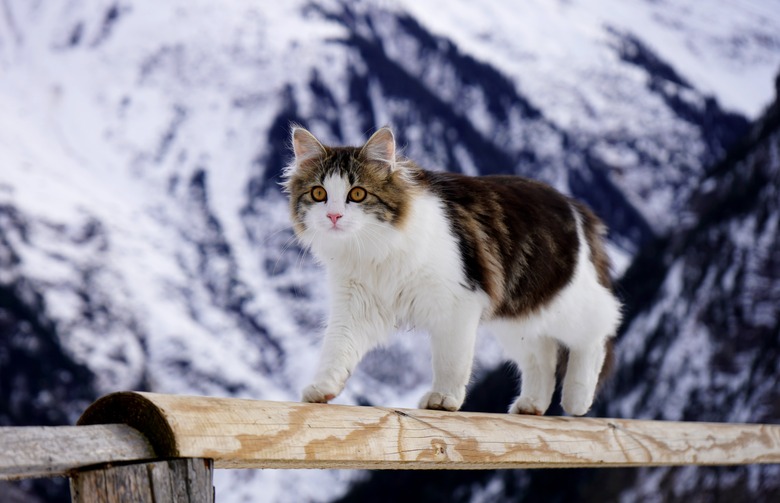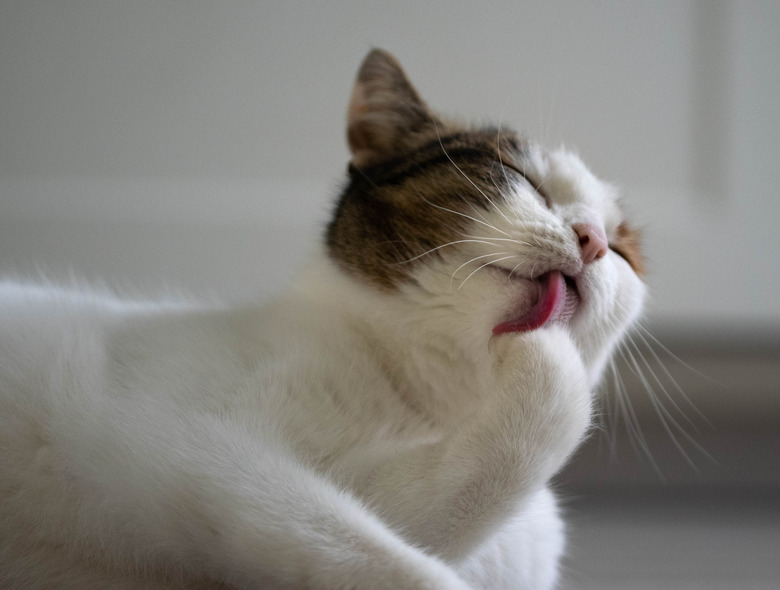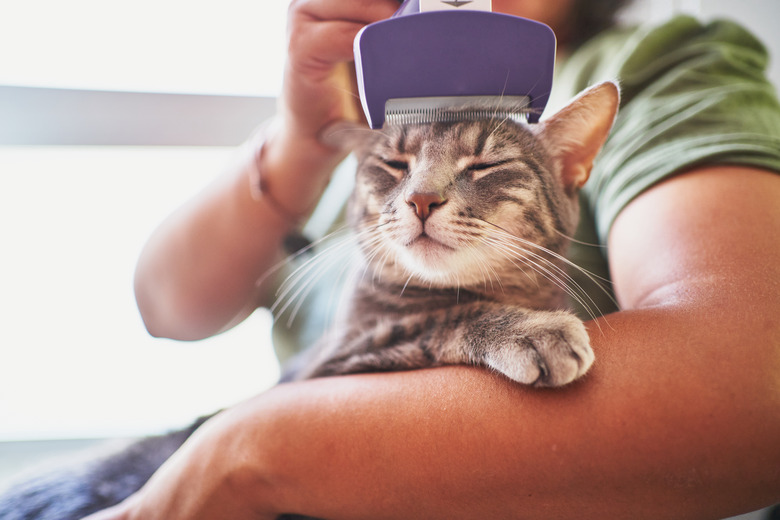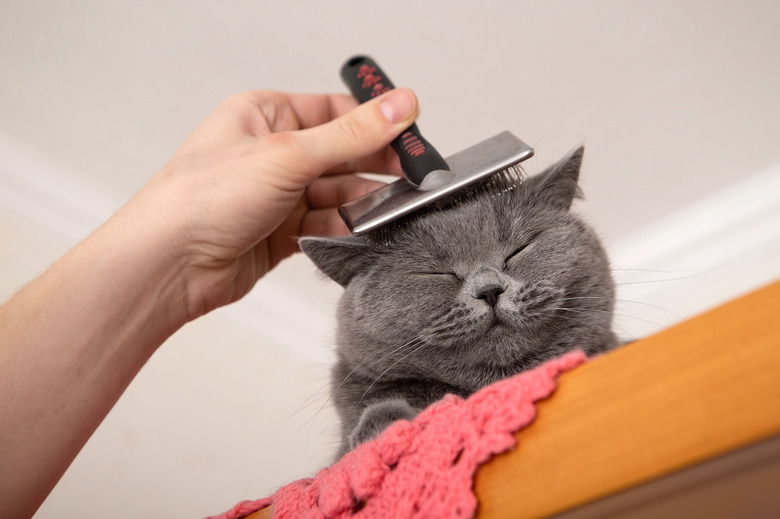What Is Cat Molting?
People have the luxury of putting on coats when the temperatures drop during the winter months. We also get to dress in shorts and flip-flops to keep cool when the temperatures rise in June. Your cat also has summer and winter attire, but getting dressed for the seasons is a bit more complicated for them. Here's everything you need to know about cat molting.
What is molting in cats?
What is molting in cats?
Molting is your cat's way of preparing for seasonal changes by transforming the fullness and density of their coat. When your cat's fur molts, hair dies and sloughs. This is why you'll find dead hair on your couches and clothing. Molting has the added benefit of keeping your cat's coat clean and removing fleas and other unwanted parasites. Most cats will molt twice a year. Yet, the frequency can vary depending on physiological and environmental factors that we discuss in more detail below. Cats customarily experience a "spring molt" that sheds their heavy winter coat, and a "fall molt" that replaces their summer coat with a thicker one to keep them warm.
Is shedding the same as molting?
Is shedding the same as molting?
Molting and shedding are similar. They're so similar that these terms are frequently used interchangeably. Both molting and shedding refer to replacing a part of an animal's body for a new and more suitable adaptation. As an example, snakes molt their skin in order to grow into larger versions of themselves, and bighorn sheep molt their "pelage," or coat, to also prepare for a new stage of growth. As a rule of thumb, molting precipitates growth; whereas shedding is the seasonal exuviating of a coat (Wingfield. Encyclopedia of Animal Behavior. 2019). Technically, cats shed — they don't molt. Yet when biologists and laypersons alike refer to cat molting, they're really referring to shedding. So, is shedding and molting the same thing? Yes, but no. Honestly, the consensus among both veterinarians and pet people is that it's a silly hair to split ... or, rather, to molt or shed.
How does molting work?
How does molting work?
Molting makes a cat's fur become longer and more full in the autumn to prepare for the cold of winter. It also transitions this thicker winter coat into a thin summer coat in the spring. Molting is a hormonal process that is triggered by shifts in temperature and daylight, according to the report of Dr. Maki Ishi at the Department of Veterinary Anatomy at Nihon University. The molting cycle is about seven to nine weeks long, depending on the climate and breed. During this time, you'll likely encounter much more cat hair than usual. When a cat molts, it creates room for new hair growth. This is what causes older hair follicles and bulbs to slough. Once shed, new hair roots take their place until reaching a genetically-determined length when they then stop growing. This shed-and-growth stage is followed by a resting state, where casual shedding may occur — but not necessarily molting. Your cat's fur dies and molts over time, and the cycle begins again.
Do all cats molt?
Do all cats molt?
Yes, all cats molt. Yet not all cats molt to the same degree. For example, breeds of short-haired cats may not molt to the extent that long-haired cats will. Similarly, since molting is a hormonal process that is triggered by environmental cues, cats in colder environments may molt more intensely than cats in warmer climates. Further complicating the molting process for your cat is the regularity and duration of time spent outdoors versus indoors, as climatic conditions and the amount of daylight affect the amount of molting.
How to care for a molting cat
How to care for a molting cat
Although molting is a natural process that your cat undergoes twice a year, your friend will likely benefit from some additional care during this phase to prevent the development of excessively large hairballs.
Hairballs
When cats groom themselves for general hygiene, their tongues remove and ingest molted hair. If a critical mass of molted hair is ingested, a hairball is formed. According to the Cornell Feline Health Center, these clumps of ingested hair can block a cat's intestinal tract and can pose a deadly threat.
"It's not uncommon for a cat to regurgitate a hairball once every week or two," says Dr. Richard Goldstein, DVM, an associate professor of small animal medicine at Cornell University's College of Veterinary Medicine. "However, the wad of matted hair can pose a serious health threat if it grows too large to pass through the narrow sphincters leading either from the esophagus to the stomach or from the stomach to the intestinal tract."
Typically, hairballs will pass through the intestines. Still, it does cause your cat discomfort and if they become obstructed, surgical intervention is needed. Furthermore, during this time, your cat may suffer a loss of appetite, constipation, and esophageal irritation from persistent regurgitation and vomiting.
Brushing and grooming
Brushing and grooming your cat during their molting cycles will help your cat to manage hairballs. While the frequency of brushing will depend on your kitty's coat, a rule of thumb is to brush short-haired cats one to two times a week and long-haired cats daily, according to cat rescuer and author, Susan Dorling.
Tips to brush a molting cat
- Start with your cat's head and brush towards the tip of the tail
- Use soft, long, and single-motion brush strokes
- Remove excess hair from the underside of your cat, preferably using a wide-toothed comb
- Short, downward strokes from the tops of your cat's legs to their paws
- Comb each side of the tail gently from base to tip, separating any matted fur
You can find a variety of pet grooming products at your local pet store, Walmart, and Amazon. Popular cat-brushing tools include combs, brushes, gloves, mat-splitters, detanglers, and even specialty lint brushes.
In summary
In summary
Molting is a hormonally-driven shedding of fur that helps your cat regulate their body temperature as the seasons transition. Molting in cats is natural, and it's generally nothing to worry about. However, molting can lead to hairballs that will cause your friend discomfort. In some cases, these hairballs can be dangerous when they grow too large to pass through your cat's intestinal tract. But with regular grooming and brushing during the molting seasons, you can ensure your cat is healthy and happy.



